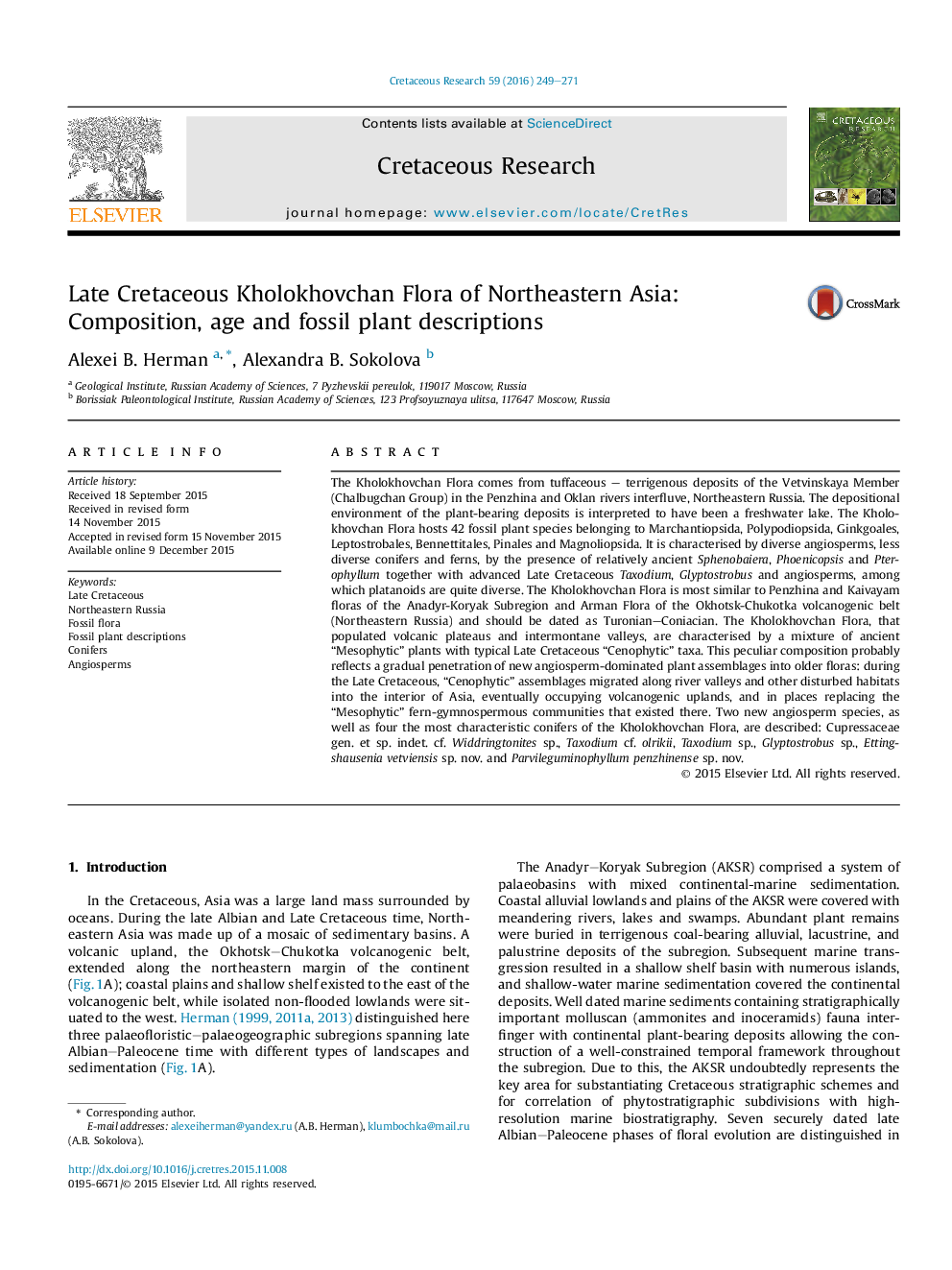| کد مقاله | کد نشریه | سال انتشار | مقاله انگلیسی | نسخه تمام متن |
|---|---|---|---|---|
| 4746801 | 1642064 | 2016 | 23 صفحه PDF | دانلود رایگان |
• Turonian–Coniacian flora of Northeastern Russia is re-examined and fossil plants studied are illustrated.
• Two new angiosperm species and four the most characteristic conifers of the flora are described.
• Composition, age and florogenetic significance of the flora are discussed.
• A scenario of a gradual penetration of new angiosperm-dominated plant communities into older floras is discussed.
The Kholokhovchan Flora comes from tuffaceous – terrigenous deposits of the Vetvinskaya Member (Chalbugchan Group) in the Penzhina and Oklan rivers interfluve, Northeastern Russia. The depositional environment of the plant-bearing deposits is interpreted to have been a freshwater lake. The Kholokhovchan Flora hosts 42 fossil plant species belonging to Marchantiopsida, Polypodiopsida, Ginkgoales, Leptostrobales, Bennettitales, Pinales and Magnoliopsida. It is characterised by diverse angiosperms, less diverse conifers and ferns, by the presence of relatively ancient Sphenobaiera, Phoenicopsis and Pterophyllum together with advanced Late Cretaceous Taxodium, Glyptostrobus and angiosperms, among which platanoids are quite diverse. The Kholokhovchan Flora is most similar to Penzhina and Kaivayam floras of the Anadyr-Koryak Subregion and Arman Flora of the Okhotsk-Chukotka volcanogenic belt (Northeastern Russia) and should be dated as Turonian–Coniacian. The Kholokhovchan Flora, that populated volcanic plateaus and intermontane valleys, are characterised by a mixture of ancient “Mesophytic” plants with typical Late Cretaceous “Cenophytic” taxa. This peculiar composition probably reflects a gradual penetration of new angiosperm-dominated plant assemblages into older floras: during the Late Cretaceous, “Cenophytic” assemblages migrated along river valleys and other disturbed habitats into the interior of Asia, eventually occupying volcanogenic uplands, and in places replacing the “Mesophytic” fern-gymnospermous communities that existed there. Two new angiosperm species, as well as four the most characteristic conifers of the Kholokhovchan Flora, are described: Cupressaceae gen. et sp. indet. cf. Widdringtonites sp., Taxodium cf. olrikii, Taxodium sp., Glyptostrobus sp., Ettingshausenia vetviensis sp. nov. and Parvileguminophyllum penzhinense sp. nov.
Journal: Cretaceous Research - Volume 59, April 2016, Pages 249–271
